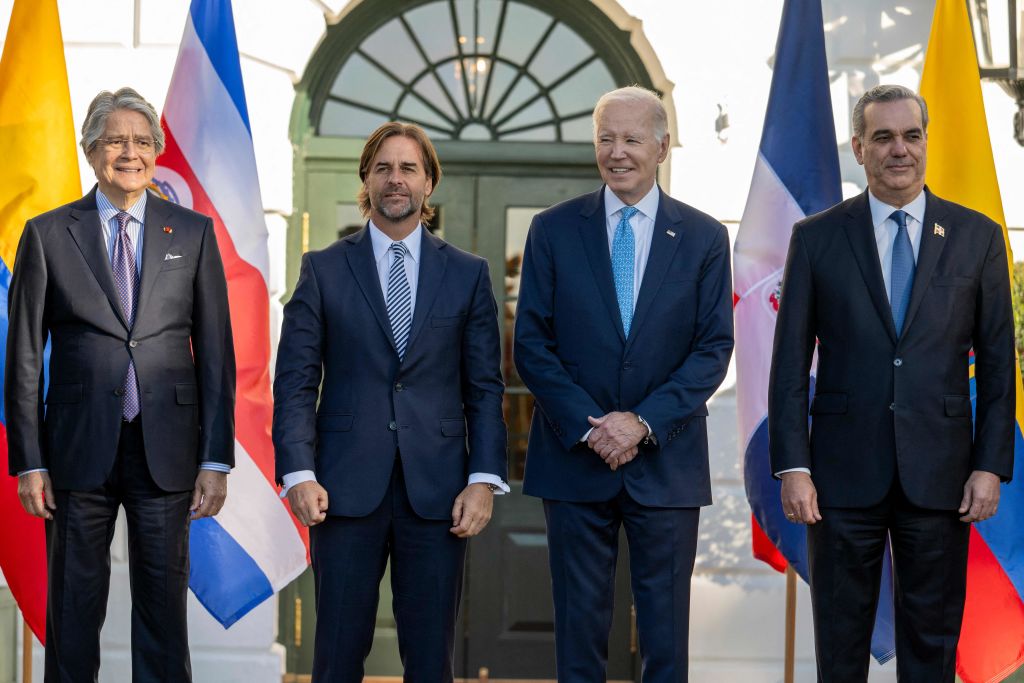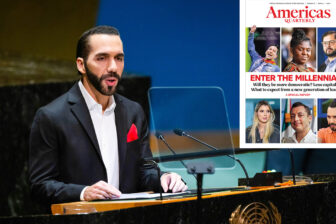SÃO PAULO — On November 3, U.S. President Joe Biden hosted the Americas Partnership for Economic Prosperity (APEP) summit in Washington, D.C., a U.S.-led forum aiming to bolster regional competitiveness and mobilize investment.
Biden and leaders from 11 other countries in the Western Hemisphere unveiled plans to drive growth and strengthen critical supply chains, initially focusing on clean energy, semiconductors and medical supplies. But major regional players like Brazil aren’t participating, citing the non-participation of Argentina and other CELAC members.
From the American side, APEP is often seen as a way to counterbalance Chinese investment in the region. But limited funds involved, limited participation from the region and limited strategic ambition mean the initiative is likely to fall short of its goals unless obstacles to wider collaboration can be overcome.
The summit’s goals
APEP, which includes Barbados, Canada, Chile, Colombia, Costa Rica, the Dominican Republic, Ecuador, Mexico, Panama, Peru and Uruguay, involves engaging a wide range of stakeholders to establish annual ministerial meetings and biennial leader summits to update collective priorities. In collaboration with partners such as USAID and other countries, the United States intends to lead a series of initiatives to promote regional development and sustainability.
APEP includes launching a new investment platform to channel funding into sustainable infrastructure focused on building modern ports, clean energy networks and digital setups. Joint commitments aim to expand infrastructure and social services for migrants and host communities and develop a regional workforce in the digital technology sector.
A major consideration for the U.S. is heading off Chinese influence in the region. China is the primary trading partner of the three most significant Latin American economies: Brazil, Chile, and Peru. Chinese influence is evident in the region’s infrastructure development, from road construction in Ecuador to port projects in Panama, hydroelectric plants in Argentina and a fiber-optic cable in Chile.
The fact is that China has long filled the relative absence of the United States in the region over the last decade. The region stands as the second-largest destination for Chinese investments, behind only Asia, and this growing dependence is part of a “strategic game” underscored by initiatives like China’s Belt and Road program and Made in China 2025.
Many specialists and experienced diplomats describe U.S.-Latin America relations after the Cold War as marked by reactivity, disinterest and asymmetry. There is little in the way of a unified plan or strategy for the region. Even the teams responsible for the area undergo constant turnover, facing difficulty achieving internal consensus.
Of course, relations between the United States and Latin America have had occasional improvements along the way, such as during the final years of the Obama administration, marked by renewed relations with Cuba. However, to this day, it still involves sporadic policies “without a clear target and often linked to urgent or problematic situations,” as one expert has written, with attention directly proportional to the perceived security risks the region poses to American interests.
Since the definitive end of the ALCA project (a free trade area in the Americas, suggested in 1994, but never fully implemented), all recent U.S. administrations have suggested less specific initiatives. Some advancements have occurred, but no paradigm shift has happened.
Some of these initiatives, such as Obama’s “New Partnership for the Americas” or Trump’s “América Cresce,” have only achieved progress in very specific areas. They do not address the critique of securitizing the fight against transnational crime (that it threatens to sideline -economic factors, governance issues or root causes of crime). They fail to propose trade incentives that would add value to Latin American products and do not eliminate barriers that, although limited, hinder the region’s exports.
They do not mention regulatory reforms or transparency measures aimed at mitigating examples of unfair treatment, not just by financial institutions but also multilateral lenders like the IMF, whose conditions often prioritize austerity measures that can exacerbate poverty and inequality in the region, with detrimental effects on local industries, employment and social safety nets.
The limitations
In summary, investments and political commitment typically do not accompany rhetoric—APEP is only the latest example. Issues with this new project include limited invested resources and participation from only a third of the region.
The largest economy in the area, Brazil, is not included, partly due to the project’s failure to address the primary interest: market access. So far, the project does not seem to have a sufficient volume of resources that could make a difference in another priority area for the country: improving its infrastructure. Except for Uruguay, the project only includes countries that already have free trade agreements with the United States. Treasury Secretary Janet Yellen recently said that APEP “is an example of ‘friendshoring’.” But that is not enough to define a strategic plan for the Americas.
Many reasons explain this misalignment, starting with historical factors: lack of trust, differences in priorities and absence of institutional infrastructure. We all know it takes work to overcome such obstacles. But if we don’t address this shortfall seriously, we’ll continue to deal with what we have: superficial proposals that offer too little and arrive too late.
—
Magnotta, an expert in US-China-Latin America relations, is a senior fellow at the Brazilian Center for International Relations and professor and coordinator of the international relations program at the Fundação Armando Alvares Penteado in São Paulo.








